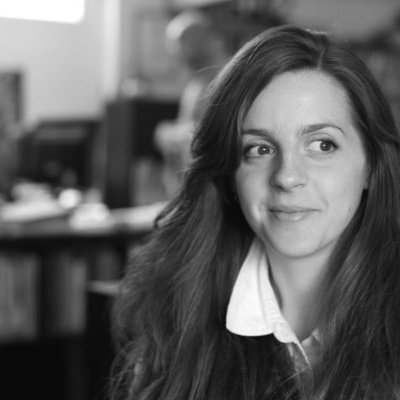Employers and Universities: Work with us?

60 Second Interview: Architect
Jessamy has been an architect for 5 years. Though the job takes a lot of hard work and dedication, she loves designing and sketching, and feels a sense of pride when projects come together. She explains what it takes to become an architect.
Name: Jessamy Knowles

Company: Western Design Architects.
Industry: Construction & Property
What is your job? Architect
How long have you been doing this job? 5 years
Education
-Kingston (post graduate) Part 3 Architecture
-Manchester School of Architecture (Post graduate diploma) Part 2 Architecture
-Manchester School of Architecture (undergraduate - BAHons) Part 1 Architecture
-Arts Institute at Bournemouth - Foundation diploma in Art and Design
- A-levels: art, physics, maths, psychology (AS level)
1. What was your very first job?
Chamber maid in a hotel in my local town.
2. What did you want to do when you were at school?
It changed frequently but I knew it would be in the area of design.
3. How did you find out about the industry?
When I was already at university, through my tutors and older students who had done work experience.
4. How did you get there?
I applied to do a foundation degree in Art and Design as it was basically free before the age of 19 and gave me a year to earn money and decide if the course and university was really for me.
The foundation art course was excellent. It allowed me to sample different areas of art and design, talk to tutors and progress my way of thinking and application of skills.
The university course (undergraduate - Part 1) was intense, especially the third, final year. You understand the meaning of hard work and dedication, and I would often find it necessary to work through the nights on a weekly basis.
Finding work experience was challenging as it was during the 2007 economic recession. But I found work at a small practice in London, where I discovered how architecture is commercially competitive and what the meaning of a 'client' is in respect to our work.
Returning back to university for my Part 2 post-graduate, felt like a great opportunity to explore creative and theoretical avenues within architecture. With a better working philosophy there were fewer all-nighters.
I found mixing academic architecture with the commercial a challenge as they require two different motivations. Sometimes you would like to apply more time and theory to a new project but the neither the client, budget nor time allow for this and so you need to learn when enough is enough.
The Part 3 course was again an intense learning curve but valuable. In hindsight, I wish the content of this course was taught at an earlier stage as it would give a better preparation for the real working world (whether you remain in architecture or move to another profession).
5. What is a typical day like?
Day to day, being an architect seems like a conventional office job. There are a number of projects to be worked on, all at different stages of development, different briefs and different clients. There is quite a lot of paperwork involved as there are many regulations and approvals to be sought, from initial design stages to full building completion.
Meeting clients and discussing a new job can be one of my favourite aspects of the job. We usually meet at the site and discuss the client's brief. We review the site, the sun, the landscape, surrounding buildings and site-specific features that can be an asset to a new development. We use this as our starting point for the project.
6. What’s the best thing about your job?
When I am able to sit and design or sketch, I am at my happiest. And as long as the essence of the design ethos can be continued through to completion then I am mostly content.
7. What is the most challenging thing about your job?
Retaining the original design and having confidence in it.
8. What advice do you have for people who want to do what you do?
Carry out some work experience first, and understand that it is not all pretty pictures. Part of being an architect is having to mediate between different people and groups and knowing the legalities of specific circumstance.
Reading design journals, either online or printed, is a great way to find out about new architecture and ideas across the world.
9. What things do you wish you’d known before starting your career?
The cost. Due to the duration of the course, living costs and material costs of the course (i.e. printing large format weekly, books, computers, software, hardware, modelling materials, field trips etc), it all adds up!
10. Where would you like to be in 5 years?
To have completed a portfolio of projects that I can stand by and be proud of.
Check out these jobs for an architect to learn more.
